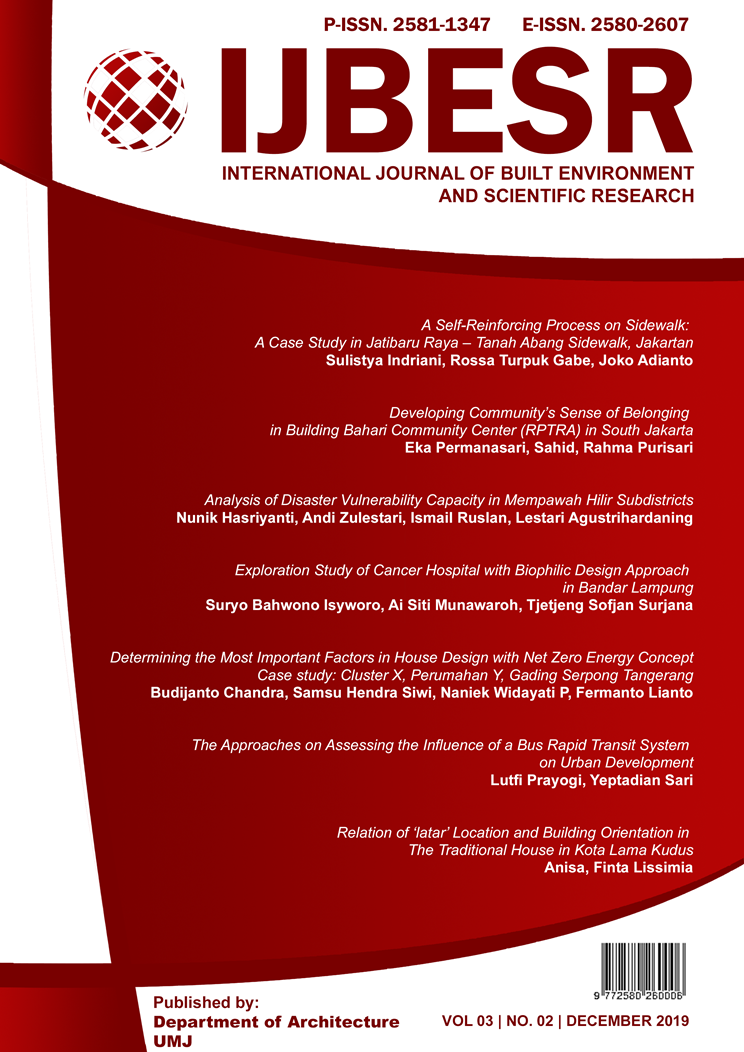Relation of ‘latar’ Location and Building Orientation in the Traditional House in Kota Lama Kudus
DOI:
https://doi.org/10.24853/ijbesr.3.2.111-118Keywords:
Latar, Building Orientation, Traditional House, RelationAbstract
In traditional houses, the latar has an important role. The latar is not just an open space that can be physically used for shared activities. But the latar has a deeper meaning. A phenomenon is found in the traditional Kudus house that the buildings in the house face the latar, and not face the road. In connection with this phenomenon, a study was conducted aimed at uncovering the connection and interpreting the location of the latar with the orientation of the traditional Kudus house. This research is a descriptive interpretative qualitative research. Field data collection is done through direct observation in the Kudus traditional house to record and describe the arrangement of the building, setting the layout, and orientation of the building and is equipped with interview data. The results of the recording and description are then analyzed and interpreted to find the relationships and meanings contained in these relations. The results of this study showed two conditions: first, there was a relation between latar location and building orientation; secondly, the latar does not only serve as the center of the building orientation, and the binding between the buildings in the traditional Kudus house. But in meaning the latar is also two important activities carried out by the people of the Kota Lama Kudus, namely ji-gang, reciting and trading.Downloads
Published
2019-12-30
Issue
Section
Articles







